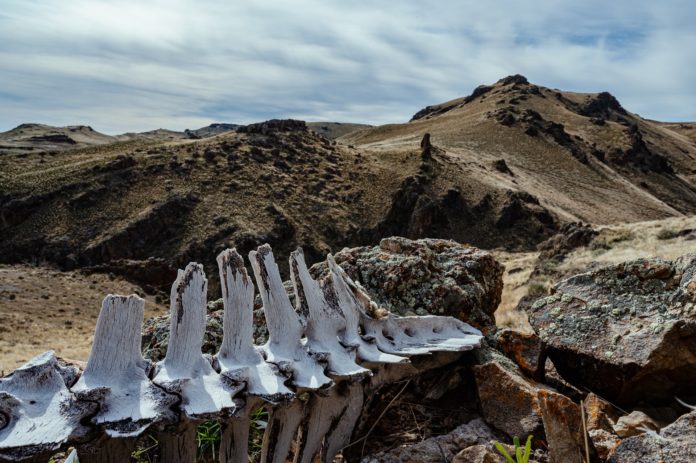With a name that literally translates to terrible lizards, dinosaurs were originally thought to be cold-blooded creatures that — like many of their lizard cousins — couldn’t survive in frigid Arctic environments.
Even after the 1950s discovery of Arctic dinosaur fossils, many palaeontologists believed that dinosaurs couldn’t maintain high enough body temperatures during the Arctic winters and must have migrated to warmer climates.
Thanks to a new discovery from the Royal Tyrrell Museum in Alberta, however, paleontologists now have evidence that at least seven dinosaur species in particular were able to nest at frigid polar latitudes. These findings not only suggest that dinosaurs lived in the Arctic year-round, but may also be the best evidence yet that unlike the majority of lizards, dinosaurs were actually warm-blooded.
The study, which examines the northernmost dinosaur fossils to be discovered, was published in Current Biology.
Could dinosaurs have survived the harsh Arctic climate?
For many years, palaeontologists doubted that dinosaurs could survive the Arctic’s extreme conditions. And even after fossilized dinosaur remains and footprints were discovered at polar latitudes, most scientists assumed that any dinosaurs able to brave the Arctic’s cold would have to migrate to warmer environments when it came time to reproduce.
This is because dinosaurs were long assumed to be cold-blooded, meaning that their body temperatures were regulated by the outside environment — and in the frigid conditions of the Arctic, they wouldn’t be able to maintain the body temperatures needed to survive.
“It wasn’t that long ago that the idea of finding any dinosaurs in such extreme latitudes and environments was a surprise,” said Patrick Druckenmiller, an assistant professor of geology at the University of Alaska Fairbanks and lead author of the study, in a press release.
Druckenmiller and colleagues had been investigating the Prince Creek Formation — a geological formation in Northern Alaska known to contain dinosaur remains — for many years prior to this study. They were interested in learning how dinosaurs could have survived the formation’s harsh conditions.
Unfortunately, carrying out field work in the Arctic is tricky. The geological formations in the Arctic are difficult to navigate, which makes it hard to find fossilized dinosaur remains.
“The field season is short in the Arctic and access is very difficult,” Druckenmiller explained. “[A]ircraft and small boats are required. [It’s] hard to safely find and extract fossils.”
Hundreds of dinosaur bones in the Arctic
After more than a decade of research in the area, however, the team’s hard work finally paid off. By combing through different regions of the Prince Creek Formation, the researchers discovered deposits of fossils containing hundreds of dinosaur bones.
The fossils included both herbivores (such as duck-billed and horned dinosaurs) as well as carnivorous tyrannosaurs. Most exciting, however, was the fact that the researchers uncovered bones from baby dinosaurs as well — including teeth from baby dinosaurs that were either still in their eggs, or had just recently hatched.
These fossils mark a major discovery, as paleontologists previously had no evidence that dinosaurs were able to reproduce in the frigid Arctic. The results detailed in their study are the first convincing evidence that dinosaurs did in fact nest at these high latitudes.
“To […] find out that most if not all of [these] species also reproduced in the Arctic is really remarkable,” Druckenmiller said.
“We have long been asked, ‘Have you found any eggs?’ […] But, we [now] have something much better: the actual baby dinosaurs themselves.”
A natural test of dinosaurs’ physiology
This discovery could also help shed light on a longstanding question in the field of paleontology: namely, whether or not dinosaurs were warm-blooded. Scientists have not yet found evidence that cold-blooded vertebrates like lizards and amphibians can survive and reproduce in the Arctic, but they do know that warm-blooded mammals can — and now they can add dinosaurs to that list.
“Year-round residency in the Arctic provides a natural test of dinosaurian physiology,” said Gregory Erickson, a professor of anatomy and vertebrate paleobiology at Florida State University and co-author of the study.
“I think that this is some of the most compelling evidence that dinosaurs were in fact warm-blooded.”









































